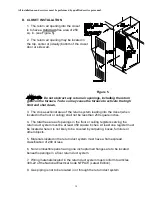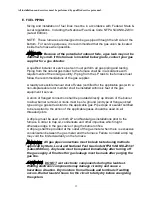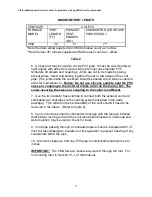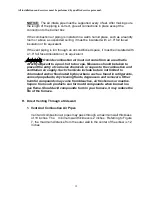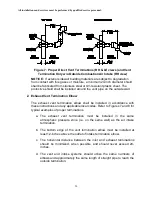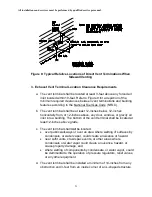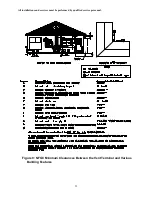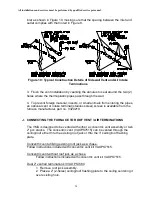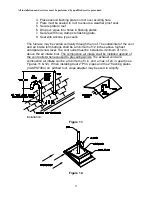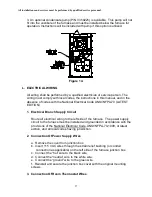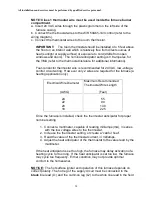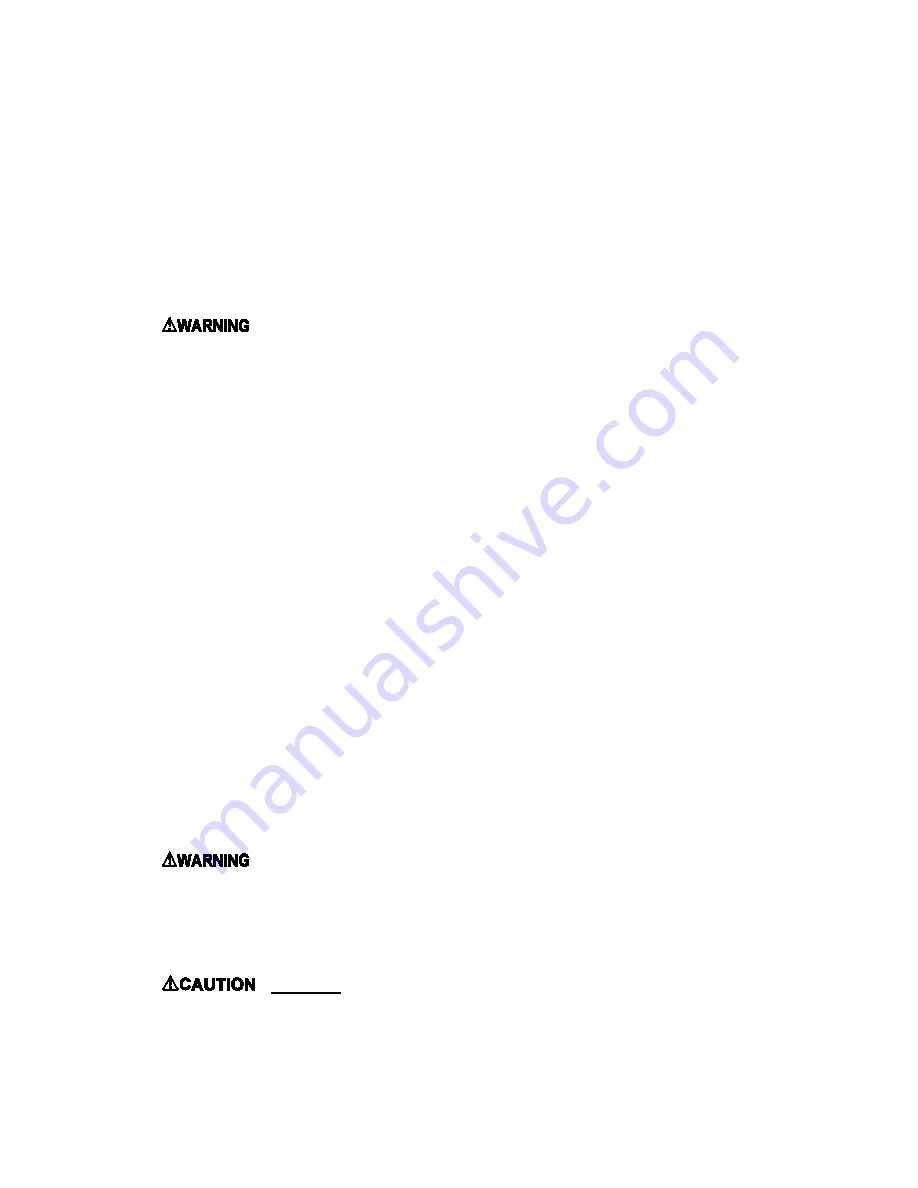
All installations and services must be performed by qualified service personnel.
15
E. FUEL PIPING
Sizing and installation of fuel lines must be in accordance with Federal, State &
Local regulations. Including the National Fuel Gas Code NFPA 54/ANSI-Z233.1
(Latest Edition).
NOTE: These furnaces are designed to be gas piped through the left side or the
bottom. For service purposes, it is recommended that the gas union be located
inside the furnace when possible.
:
Because of the potential of odorant fade, a gas leak may not be
detected by smell. If this furnace is installed below grade, contact your gas
supplier for a gas detector.
A qualified installer or service person must perform all gas piping and testing.
Piping from the natural gas meter to the furnace shall be in accordance with
requirements of the local gas utility. Piping from the LP tank to the furnace must
follow the recommendations of the gas supplier.
A readily accessible manual shut off valve (certified for the applicable gas) with a
non-displaceable rotor member shall be installed within six feet of the gas
equipment it serves.
A union or flanged connection shall be provided directly up stream of the burner
to allow burner removal. Unions must be of a ground joint type or flange-jointed
type using a gasket resistant to the applicable gas. Pipe dope or sealant certified
to be resistant to the action of the applicable gases should be used on all
threaded joints.
A drip leg must be used on both LP and Natural gas installations prior to the
furnace in order to trap oil, condensate and other impurities which might
otherwise lodge in the gas valve or plug the burner orifice.
A drip leg shall be provided at the outlet of the gas meter when there is excessive
condensation between the gas meter and the furnace. Failure to install a drip leg
may void the limited warranty on the furnace.
:
All gas pipe connections must be leak tested using methods
approved by State, Local and National Fuel Gas Code NFPA 54/ANSI-Z233.1
(Latest Edition). Any leaks must be repaired immediately after turning off
the gas supply. A final test for gas leakage must be made after purging the
gas line.
:
DO NOT wet electronic components during the leak test.
Wetting electronic components may damage circuitry and cause a
hazardous situation. Dry moisture from all leads and terminals if wetting
occurs. Wait at least 24 hours for the circuit to fully dry before energizing
the system.














